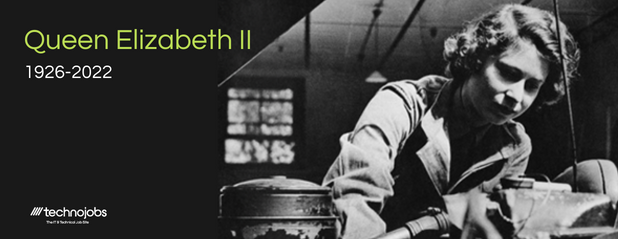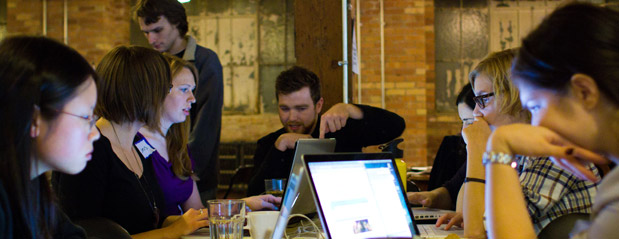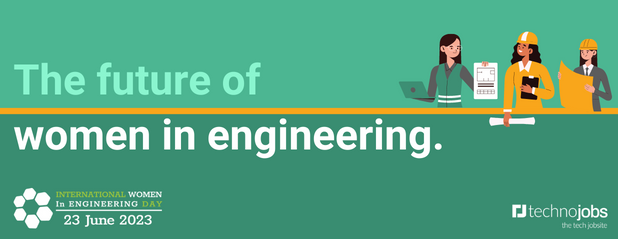How Queen Elizabeth II contributed to the innovation of engineering throughout her reign.

On Thursday 8th September, we were informed of the passing of Queen Elizabeth II, who served for 70 years as the UK’s longest reigning monarch in history. During her reign, she has been a patron of many engineering institutes including the Institution of Royal Engineers, the Institution of Engineering and Technology (IET), the Royal Aeronautical Society, and many more.
The Queen became interested in engineering from an early age
Not only has Queen Elizabeth II been a patron of these institutes, but she has also had first-hand experience as a Mechanical Engineer herself. At the age of 18, during World War II, she served as a second subaltern, which is the equivalent of a second lieutenant, in the Women's Auxiliary Territorial Service, the women's branch of the British Army. There she trained as a driver and an auto mechanic and was the first in her family to serve in the military.
How the Queen embraced engineering
Her involvement in the engineering industry didn’t stop there. After she was crowned in 1953, she attended many openings including the opening of the world’s first nuclear power station at Calder Hall, in Cumberland. Queen Elizabeth made a speech where she stated that ‘this new power, which has proved itself to be such a terrifying weapon of destruction is harnessed for the first time for the common good of our community.’ She then pulled the lever which directed electricity from the power station into the National Grid for the first time, making the town of Workington the first town in the world to derive heat, energy, and power from nuclear energy.
In 1976 Queen Elizabeth II made history again when she visited Malvern to rename the Royal Radar Establishment (RRE), the Royal Signals & Radar Establishment (RSRE). During her visit, she became the first monarch to send an email which was sent to the US Secretary of Defence to formally open a UK/US collaboration on a UK-invented military programming language.
The Royal Academy of Engineering
In the same year, the Royal Academy of Engineering was founded by 126 of Britain’s leading Engineers with the support of HRH Prince Philip, The Duke of Edinburgh. Over the years the Royal Academy of Engineering has become pivotal in the UK's global position in engineering and innovation. Through generous support from her Majesty and her late husband HRH Prince Philip, the academy has been successfully developing many innovative ideas that all contribute to products and services that benefit the country. Professor Sir Jim McDonald, president of the Royal Academy of Engineering released a statement after her passing where he said she ‘has always shown an active interest in new developments. Indeed, she has inaugurated many of the UK’s most important engineering projects, from the Channel Tunnel to the Diamond Light Source, and she was the first monarch to send an email.’
The Institution of Engineering and Technology
As mentioned previously the Queen was a patron of many institutes, including The Institution of Engineering and Technology (IET). On the day of her passing, the president of the IET shared a statement commemorating her service to the institute for the past 70 years. Sir Julian Young said, ‘Her Majesty was an unwavering advocate of engineering and technology and graciously consented her patronage to the Institution in 1953.’ During the IET’s 150th anniversary in 2021, the Queen also credited the work of Engineers, in her letter to the institute she wrote, ‘Engineers have created solutions to global challenges and continue to improve the lives of millions of people all over the world. This anniversary provides an opportunity to thank and recognise the dedication and hard work of all those working in engineering and technology who, every day, make a difference to society.’
The Queen Elizabeth Prize for Engineering
In 2011 the Queen allowed her name to be used to represent the Queen Elizabeth Prize for Engineering (QEPrize). An award that is presented every two years, which helps to celebrate bold and ground-breaking engineering innovation of global benefit to humanity. Queen Elizabeth’s aim for this prize is for it to ‘be an aspiration of the international engineering community and an inspiration to young people everywhere, by letting them know that it is an exciting time to become an engineer and that by joining this profession they, too, can make a real impact on the way we live our lives.’
The award itself offers a generous £500,000 cash prize and is funded by some of the most prestigious engineering companies including Jaguar Land Rover and GSK. Previously the QEPrize has been awarded to teams rather than individuals, as it was in 2013 when Queen Elizabeth awarded the prize to five people for their work on The Internet and the Worldwide Web. The Queen said she hoped the prize can help to recognise ‘those who have brought benefits across the globe’ she said ‘It is right that we should celebrate those achievements, given that engineering is a modest profession, which tends not to blow its own trumpet.’
Throughout Queen Elizabeth II’s 70-year reign she has been a keen supporter of the industry and has praised those working in engineering and technology for creating solutions to global challenges and how these solutions in her words, ‘continue to improve the lives of millions of people all over the world.’
Find out the different types of engineering roles available here



